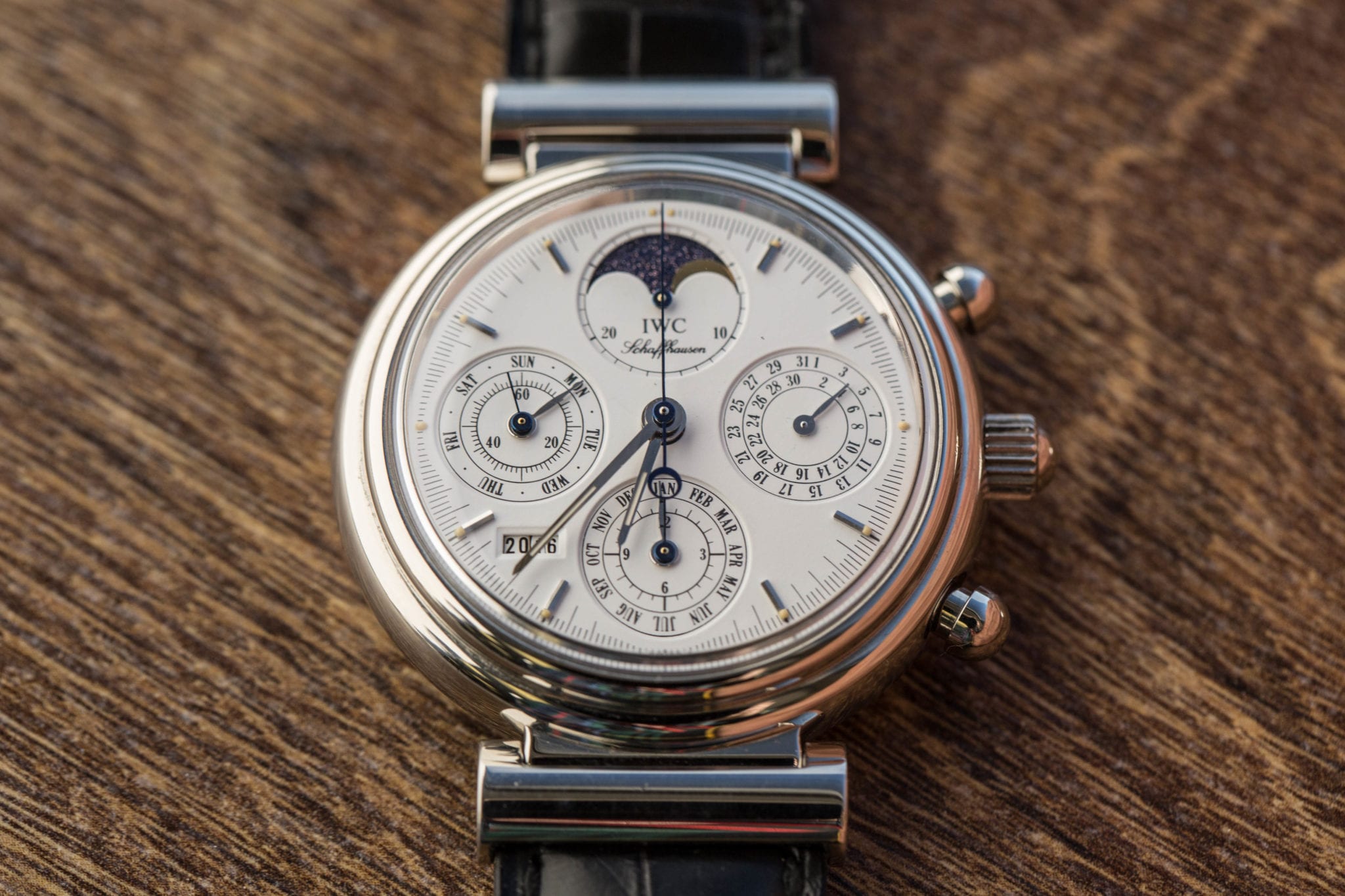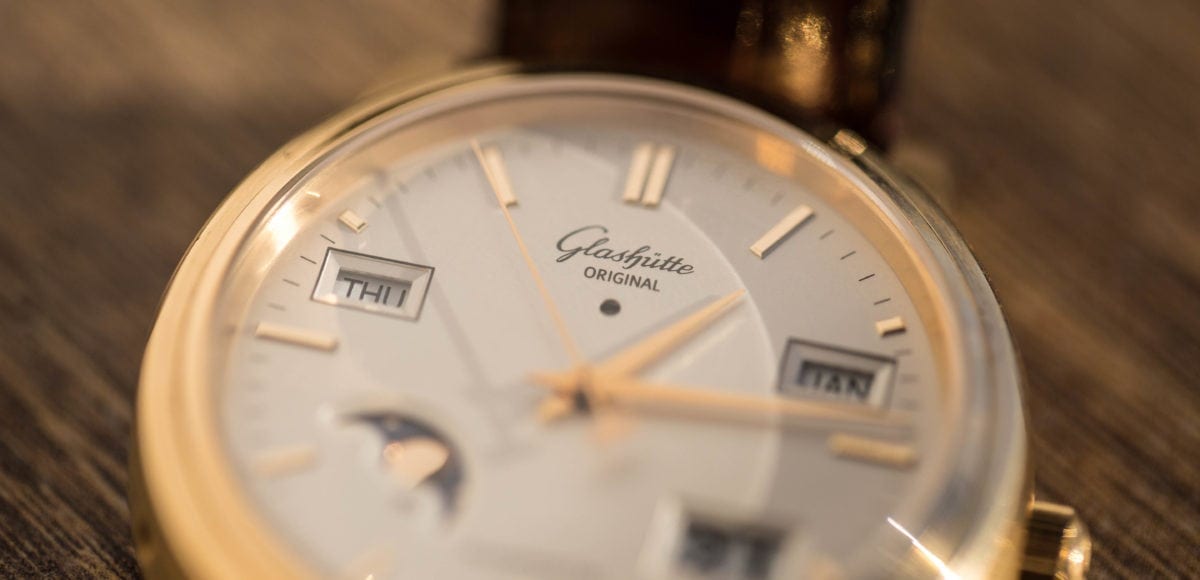History of the Perpetual Calendar Complication
The most basic watches tell time only, but others feature complications. One of the most common varieties of complications is the date complication. A date complication can be as simple as the day and date in a window on the dial or as sophisticated as a perpetual calendar complication. Compared to other more intricate complications like a tourbillon or moonphase, the date complication is relatively simple. However, the perpetual calendar complication is one of the most complex versions of a date complication. It’s somewhat similar to an annual calendar complication in its function. It displays the day, date, and month. The difference between the perpetual and annual calendar is in the operation of the function. An annual calendar requires manual adjusting once a year to account for the leap year. Instead, the perpetual complication’s design accounts for the leap year. Therefore, it can function properly without manual adjustment for hundreds of years. One of the most fascinating and intricate complications in a watch is the perpetual calendar complication. Crown & Caliber takes a look at its history.
What is a Perpetual Watch?
Watch complications can be rather intricate, even to the most well versed timepiece aficionado. A watch complication includes any function on a watch other than the time, such as a chronograph, a tourbillon, or a moonphase. One of the most common is the date display. However, even this seemingly simple complication can be fairly complex. Date displays come in five varieties: the day-date, the triple calendar (or complete calendar), the annual calendar, the perpetual calendar, and the equation of time (or EOT perpetual calendar). The latter two are the most intricate and sophisticated of the group, called grand complications. So, what is a perpetual watch? The perpetual calendar complication shows the date, day, month, and year. More importantly, it automatically takes into account the leap years over the course of a century. Once a century, a perpetual calendar watch will require manual adjustment to account for when the leap year is bypassed. In addition to sharing the features of a typical perpetual calendar complication, the EOT perpetual calendar features two additional measurements. These include the difference between our standard “calendar time” and the actual “solar time” in minutes. The classic perpetual calendar and the EOT perpetual calendar complications are rare. As a result, they add considerable value to the cost of a timepiece.

An IWC with a Perpetual Calendar Complication
How Does a Perpetual Calendar Work?
You may still be wondering, how does a perpetual watch work? The perpetual calendar complication is both elaborate and remarkable. It involves anywhere from one hundred to two hundred additional parts. It takes weeks or even months to make. Unsurprisingly, it requires extraordinary engineering capabilities. The design of perpetual calendar mechanisms varies from manufacturer to manufacturer. Typically, they have a programmed date wheel with twelve sectors, one for each of the twelve months in a year. Every sector has a different perpetual cam with various markings that correspond to the length of the month. For example, the markings for months with thirty days may have a shallower notch than the months with thirty-one days. A perpetual lever then pivots, pushes against the perpetual cam, and connects it to the date wheel. Depending on the position of the perpetual lever with respect to the depth of the marking on the perpetual cam, the mechanism determines how many steps the day index should move at the end of the month.
The month of February makes this already intricate process even more complex. To factor in leap years, there’s an additional rotating piece situated under the date wheel for the month of February. This piece usually contains four sectors, which represent three standard years and the leap year that occurs every four years. Each year, it rotates. For the three standard years, the perpetual lever is set to engage on February 28th, based on the depth of the markings on the wheel. On the leap year, the lever is set to engage with a different marking, which triggers the date, February 29th.
The Invention of the Complicated Function
The history of the perpetual calendar complication dates back to the mid-1700s. In fact, the function actually pre-dates the annual calendar by many decades. An English horologist named Thomas Mudge invented the earliest known watch with a perpetual calendar complication in 1762. Mudge made a name for himself in watchmaking at an early age. He invented the detached lever escapement in 1755. The original perpetual calendar pocket watch currently resides at The British Museum in London. After Mudge’s invention, the complication didn’t appear again for about 100 years. In 1864, Patek Philippe created a pocket watch featuring the intricate function. It took them 25 years to patent the mechanism in 1889. Still, it wasn’t until several decades later that the complication saw incorporation into the first wristwatch.
The First Perpetual Calendar Wristwatch
Patek Philippe was also the creator of the first perpetual calendar wristwatch. They produced the first compact perpetual calendar movement just about ten years later in 1898 for a women’s pendant watch. Then, in 1925, a wealthy collector of Patek Philippe watches named Thomas Emery commissioned the first wristwatch featuring the complication. Patek Philippe used the same compact, 34.4mm caliber created in 1898. It took them two years to produce the intricate timepiece. Breguet was the next brand to create a perpetual calendar wristwatch, just a few years later in 1929. Their compact movement was even smaller than Patek Philippe’s, measuring just 22.5mm. Jaeger-LeCoultre followed Breguet several years later in 1937. Their unique rectangular perpetual calendar watch is thought to have been created in commemoration of the partnership between LeCoultre and Edmond Jaeger that resulted in the Jaeger LeCoultre brand.

An Audemars Piguet with a Perpetual Calendar Complication
The Perpetual Calendar Complication Through the Decades
Like the original perpetual calendar wristwatch made by Patek Philippe, most of the early perpetual watches were commission timepieces. It wasn’t until the 1940s that serial production of the watches ramped up. Then, it wasn’t until the 1960s that the first automatic perpetual calendar watches began hitting the market. Another significant moment for the perpetual calendar complication came in 1985. That year, IWC made one of the most profound advancements in the complication’s mechanism. They designed a synchronized caliber that uses only a single crown for adjustment, as one would for a simpler timepiece. Today, the complication continues to fascinate watchmakers and watch enthusiasts. Some of the most elaborate and expensive timepieces feature the perpetual calendar complication, making them highly valuable. The perpetual calendar function doesn’t just serve the practical purpose of showcasing the day, date, and month without adjustment. It serves to elevate the craft of watchmaking itself.

In IWC Big Pilot with a Perpetual Calendar Complication
Get More Articles Like This in Your Inbox
We're constantly creating great content like this. So, why not get it delivered directly to your inbox? By subscribing you agree to our Privacy Policy but you can unsubscribe at any time.






